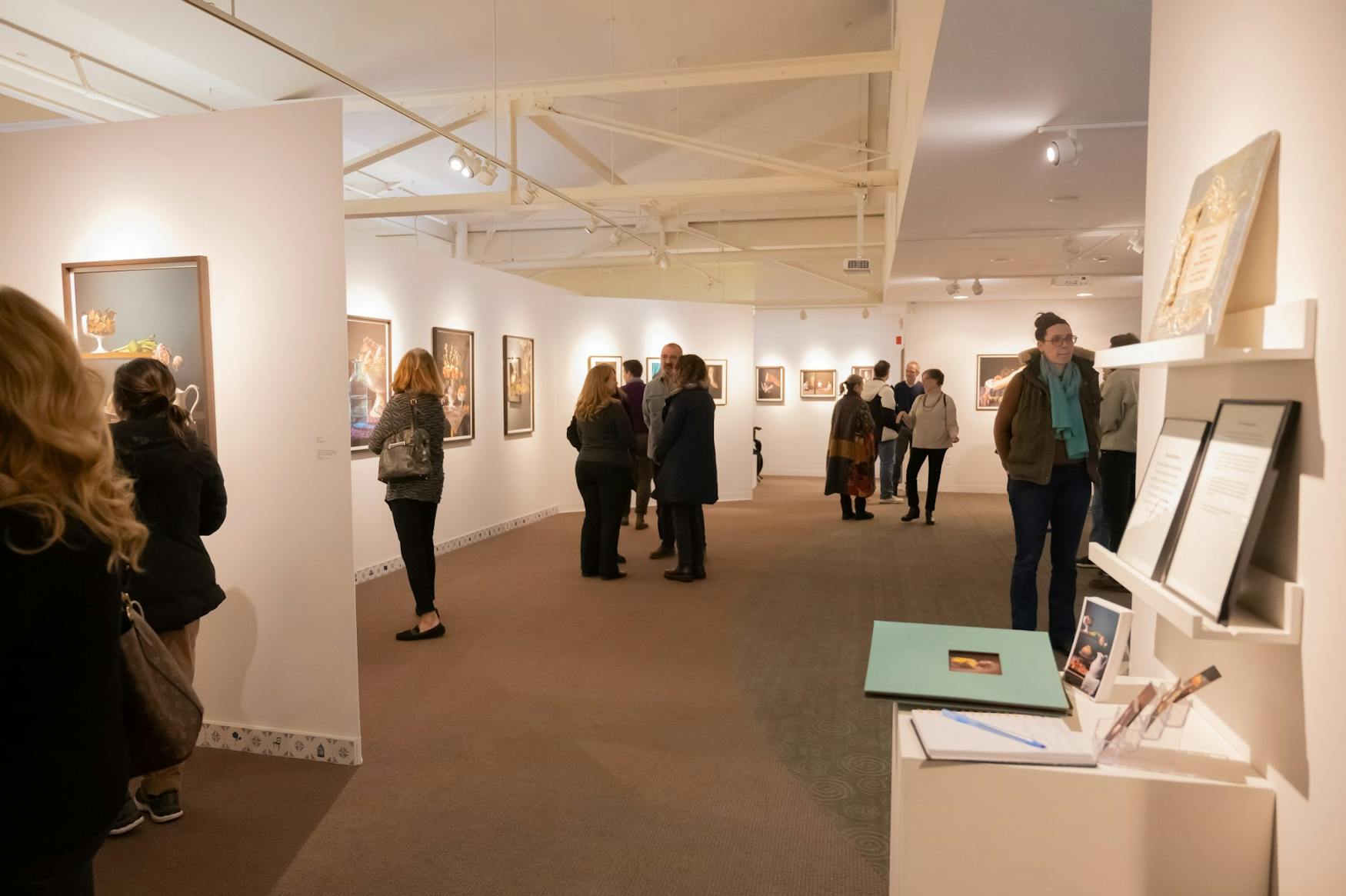Artist Becky Behar gives talk for photo exhibition, 'Interlaced'
Behar's photos emulate themes of motherhood, domesticity, and transience.
In celebration of photo-based artist Becky Behar’s solo exhibition “Interlaced,” the Women's Studies Research Center at Brandeis hosted an opening reception and artist talk on Jan. 26 at the Kniznick Gallery, where Behar’s photographs will remain on display until Feb. 22. Behar discussed her artistic process, the series of works on view in the exhibition, and her current studio practice.
Behar started photography at the age of 45, and as a mother of three, she began her career at a point when her children were transitioning into adulthood. One of the series in the exhibition, “Seeing You, Seeing Me,” contains posed portraits of her 21-year-old daughter and still lifes of domestic scenes. Heavily influenced by painter Johannes Vermeer, the photos have a highly luminous quality as sunlight pours through windows onto the rich tones of the subject matter. This series examines the fleeting nature of time as Behar captures images of her daughter, flowers, and fruit in her home environment. She ruminates on how the time of day, the time spent photographing her daughter, and the experience of motherhood are all transient moments in her life.
The opening reception welcomed not only Brandeis community members, but also friends and family of Behar who came to see the arrangement of works. Works on display included portraits, still lifes, monitors that detail the stories behind select photo series, and ceramic tile baseboards with cyanotype patterns of various items that can be found throughout her works. Curator and artist Olivia Baldwin collaborated with Behar in the arrangement of pieces for “Interlaced.” The two initially considered using only one of the series currently on display but decided to put all four series into direct conversation and allow viewers to see what reoccurs throughout the pieces. This inter-series cohesion is evident in her signature usage of dramatic lighting over subjects that emerge from dark backdrops and largely depict scenes of family, faith, and tradition.
Prof. Harleen Singh (WGS, SAS) commenced the artist talk portion of the evening, which was followed by Baldwin’s official introduction of Behar. The artist began by explaining the title of the exhibition by explaining how the variant readings of the word “interlaced” are relevant to her photography. Behar shared how influences such as Judith Black, Imogen Cunningham, and Sally Mann are interlaced into her work, as each of these artists demonstrate the relationship between motherhood and photography. “Photography, much like motherhood, happens both in milliseconds — as you open the camera shutter — as well as in years and decades as you see a static record of what was and compare it with what is,” she said.
All of Behar’s photographs are choreographed, even those with human subjects. She spoke on how she collaborates with her children to tell their stories and hers. Instead of taking candid photographs, which Behar believes could interfere with their lives, she chose to construct formal images. “In doing so I create visual stories that are both a perfect document and a complete fiction of my current life,” she said.
Each of her three children appear in her series, “Homespun,” which utilizes yarn and threads to metaphorize their family life. She writes on her website: “Just as tension determines the body of a fabric, I use yarn, string, and rope to interlace a narrative. A textile carries its own qualities: tenacity, strength, and resistance. My images portray our fears, hopes, and comforts – the lives we stitch together.” One large 27 x 36 inch piece called “Fringes” from the “Homespun” series distinguishes itself as the only photograph on one of the gallery’s walls. Baldwin considers it one of the most striking pieces in the entire collection and decided to leave it as a stand-alone piece to not only create a balance between the denser areas of the gallery, but also to recognize its exceptionally evocative nature.
Another one of the included series is “Tu Que Bivas,” an ongoing project that explores Behar’s background and contains elements of oral tradition and the passage of culture from one generation to another. Behar has spent the last 18 months doing research and talking with her mother and daughter to create a portfolio that studies their Sephardic roots.
Behar concluded her presentation by noting that with these photographs she wishes to investigate the fragility of life and capture scenes of fractured items intermixed with vulnerable moments. “There's decay and there's healing. With my camera, I stopped time with intent.”



Please note All comments are eligible for publication in The Justice.